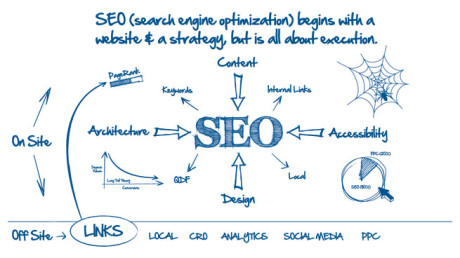Back in 2008, some experts predicted that mobile Internet usage would overtake desktop usage by 2015. Well, it’s now 2015, and while mobile hasn’t quite staged the takeover that was expected, it’s certainly made leaps and bounds. In fact, several studies have confirmed that about 50 percent of all web searches take place on mobile devices, and the numbers continue to grow.
What’s even more interesting, though, is that while more consumers are using their smartphones and tablets to search the web, the real engagement still comes on desktop devices. Users spend about three times longer on sites when they are on their computers rather than mobile devices, and when it comes to conversions, mobile still has some catching up to do. The fact is, many websites simply aren’t properly set up for mobile, and are thus missing traffic and conversions.
Reclaiming that traffic requires not only more attention to responsive design, but also adjusting SEO strategy to better capture mobile traffic. It’s no longer adequate to think of “SEO” as a single umbrella that covers both your desktop and mobile sites. Mobile SEO requires its own strategy — and an understanding of the nuances that require a different approach for each.
The Basics of Mobile SEO
The experience of using mobile is very different than using a desktop, so why would you use the same SEO strategy that you do for your regular website? Think about how you use mobile search yourself. Do you scroll through several pages of results as you might on your computer, searching for the perfect link? Or do you choose from one of the first results? Do you have to read pages of text, or have to adjust your device to see everything? If you do, you probably go back and choose a different result.
Keeping your own experiences and preferences in mind, you can develop an SEO strategy to get more mobile traffic and engagement. Start with these six methods:
1. Mind Your Redirects
Automatically directing users to your mobile site when they are on a mobile device saves times and improves the experience. However, if you’re not redirecting to the right place, you have too many, or they are not arranged correctly, you could be losing traffic and slowing down loading speed. Some recommend using server-side redirects rather than JavaScript, since some older devices may not recognize JavaScript.
2. Optimize for Local Search
If you have a physical location, or if you serve a local audience, be sure that your pages are optimized for local search. Since many people use their mobile devices to search on the go, having your site optimized for local search allows you to reach them when they need you most.
Not only should your city and state be located in your content, you need to include it in your H1, Meta, and alt tags, as well as URLs when appropriate. And don’t forget to have your name, address, and phone number on all relevant directory sites, like Yelp or TripAdvisor, which can boost your SEO on every platform.
3. Use Mobile Friendly Tags
Mobile users don’t have as much screen space as desktop users, so keep that in mind when writing your titles, Meta descriptions, and tags. Be concise but accurate, and try to keep title tags to about 50 characters and Meta descriptions to 90 characters,
4. Practice Responsive Design
Some experts suspect that Google rewards those sites with responsive design in SERP listings, which is yet another reason you need to consider the end user when developing your mobile site. Not only should your site automatically adjust to fit the device screen, but also the elements of design should be simple, clear, and easy to use. Avoid using pop-ups or including elements that slow down loading speed, including Flash, which may not even load on certain devices. Make navigation easy, remembering that small buttons can be frustrating to some users, and have a
clear call to action.
5. Keep it Short
Again, smaller screens leave less room for content — and users aren’t always willing to scroll through page after page of content to find what they are looking for. Best practice for traditional websites might be to include at least 250 words of content on each page, but mobile sites don’t need as much text. Keep it short, and get to the point quickly.
Mobile site SEO requires rethinking what you think you know about SEO and adjusting your strategy. When you do, though, you’ll see better results in terms of both traffic and conversions.
Originally posted on June 5, 2015 @ 5:26 am

its all ways are very good to Optimize SEO for mobile.
Thank you for sharing this post! As per Google latest algorithm of mobile-friendly algorithm. This are helpful steps to start with!